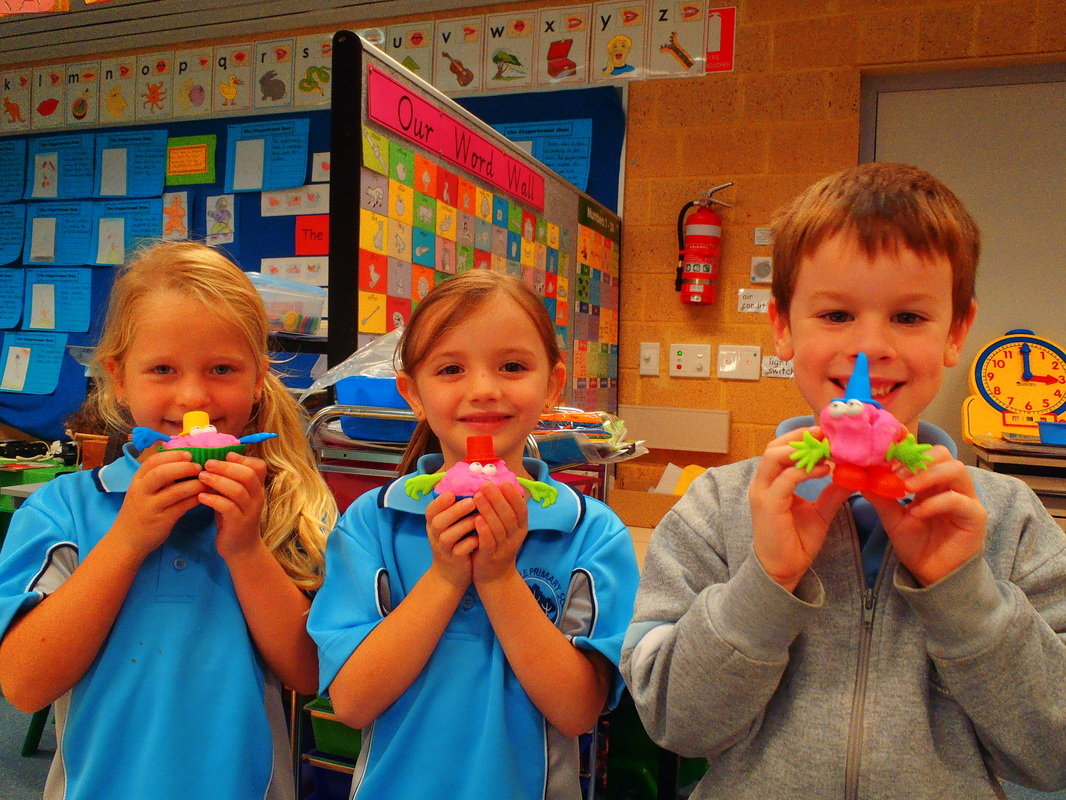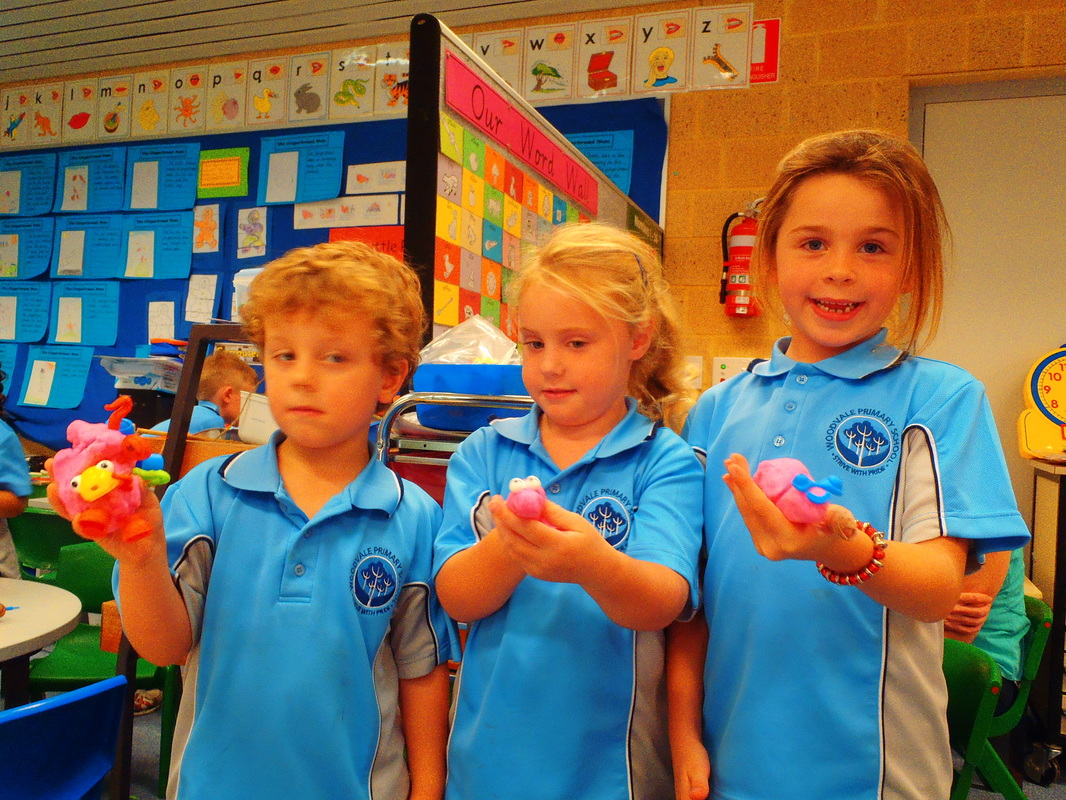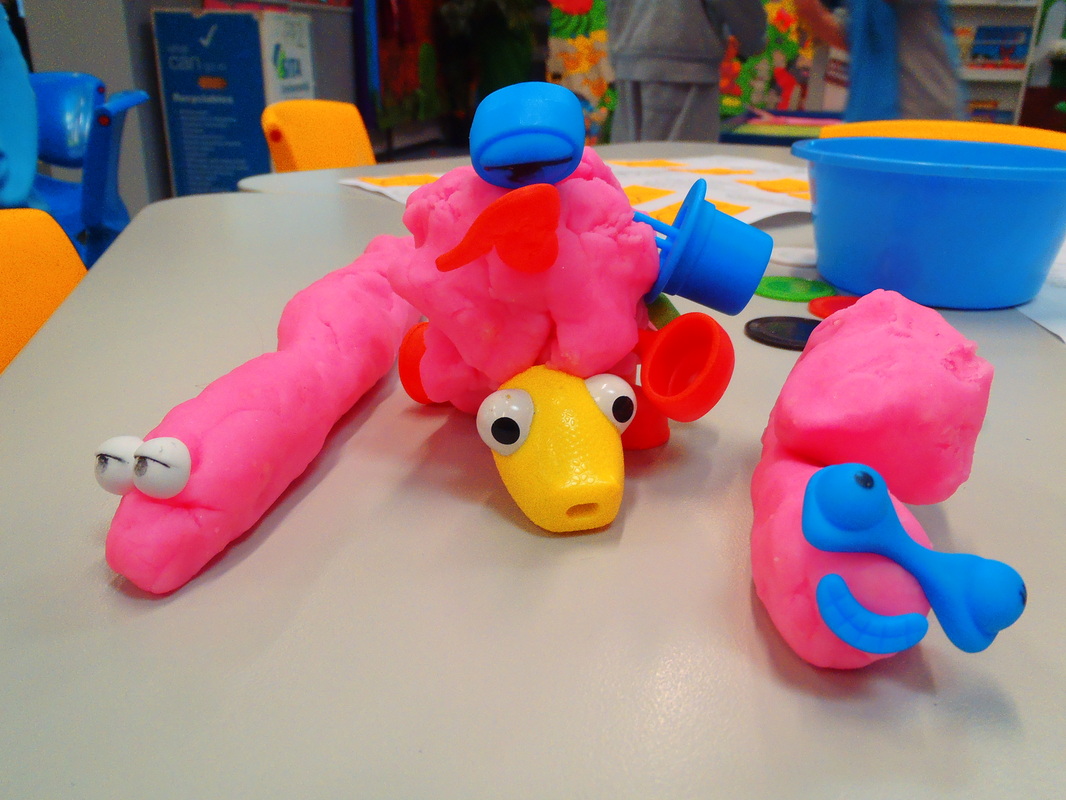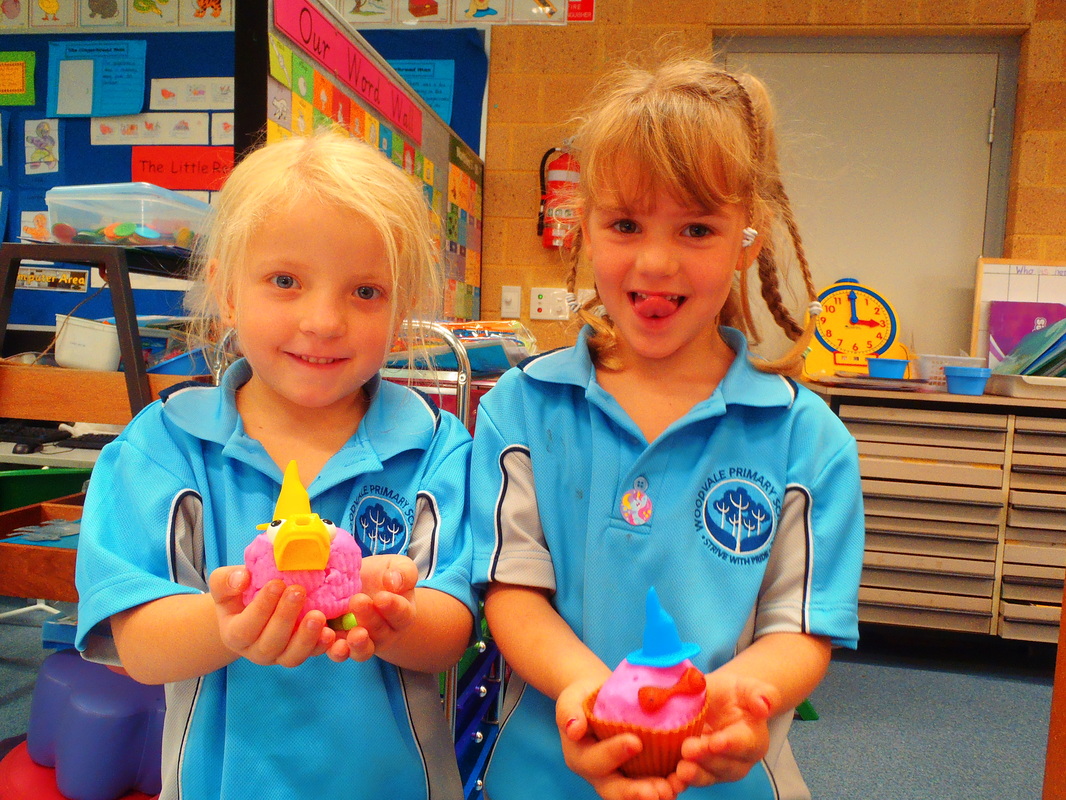 During the holidays you can assist your child to revise concepts we have been learning this term. As you revisit previous posts it will aid you in remembering the various concepts and ideas you can use at home.
* In our phonics programme we have looked at the letters;
s,a,t,p,i,n,m,c,d,g,c,k,ck
You can assist your child in recognising these sounds as well as forming them.
* We are focusing on hearing individual sounds in consonant-vowel-consonant words and blending and segmenting these sounds. eg. Dog has 3 sounds d-o-g (segmenting) and B-e-d makes the word bed (blending).
* We have looked at text conventions and are using this skill when reading and writing simple texts. Over the holidays is a great opportunity for your child to retell events, draw a picture and write about their experiences, write a caption for a photo, send a letter to a relative, have a phone conversation about an activity they have done etc.
* When using oral language, encourage your child to use full sentences, correct tense and pronouns, expand on their ideas, connect their ideas using a range of connectives such as; next, then, and, and then, so, because. Also encourage your child to use appropriate speaking conventions; looking at the listener, speaking clearly and using an appropriate volume and tone of voice.
* Practice letter formation using various materials such as paint, chalk, water and paint brush, shaving cream, mirrors, sand, flour, playdough, rice etc.
* Revise rhyme and syllables.
* Numbers to 15: recognising numbers and forming numbers.
* Simple addition using objects
* Measurement using objects.
* 0-9 number sequence.
* Pencil grip and scissor skills.
* Make the most of incidental learning opportunities such as hanging out the washing, posting letters, shopping, making dinner, folding clothes, sorting items, reading stories, art and craft and retelling events. All these experiences have rich learning opportunities that only take a few minutes to reinforce and practice.
I hope you have a safe and happy holiday, I want to thank all the parents for your support and hard work this term it has been an absolute pleasure to meet and work along side you. I will come and visit through out next term so I will hopefully see you all then.
 Click to access song Last week we looked at Row, Row, Row Your Boat. We sang the orogianl version and then looked at an alternate version that incorporated different animals and bodies of water. Using the different animals the students then chose an animal to create their own page in our class Row, Row, Row Your Boat Book. They then had to identify the correct words from a list and copy them into their Nursery Rhyme. We identified the rhyming words in the Nursery Rhyme which helped us to remember each animal and where it belonged. We then discussed various environments that animals can live in and special features they have as a result. You can read our class book in our book corner.
We explored the concept of float and sink using the water trolley and then designed and created a boat using various materials. We drew a diagram of our boat, listed the materials we used and explained why we chose those materials. Once we had built our boat we tested them in the water trolley. We then reflected on the materials we chose and if they were effective.
In Literacy we are continuing to look at text conventions and as a class highlighted the start of the Nuresry rhyme passage, capital letters, long and short words, full stops and text direction. This is an important skill that helps us to navigate a text as well as apply this kowledge when we are writing.
To develop our oral language we played a game called pass the picure. We sat in a circle and passed a beanbag around to the left, that is the way we form our letter c, just like we are learning this week. When the music stopped the person holding the beanbag was given a picture card. They created clues for the rest of the class to guess what they were holding. We were very good at giving descriptive clues and guessing what the mystery picture was. After this game, we used our skills to create a class book. We selected a picture and gave clues for our reader to guess. You can read our class descriptive language book in our book corner. You could play this game at home using pictures or objects.
As a part of tuning into sounds and phonetical awareness we have been looking at final sounds in words. We are getting much better with our initial sounds and are now listening carefully to detect the final sound in words. This will assist us to blend letter sounds when reading and segment sounds when writing.
In Numeracy we are revising addition and also looked at odd and even numbers. We discovered that all even numbers must have a 2,4,6,8 or 0 at the end. An even number means it can be shared into two groups or divided into two equal groups, just like when we line up with a parnter. If we have an odd number of people not everyone will have a partner. We then played Numbler Jumbler on the Interactive Whiteboard to sort the even and odd numbers. We have also been looking at the concept of measurement and using objects to measure height, length and width. When measuring we need to remember to start at the bottom of an object and measure all the way to the top in a straight line with no gaps. We used this skill to measure the height and width of a boat using blocks and then created an anchor to any length we chose.
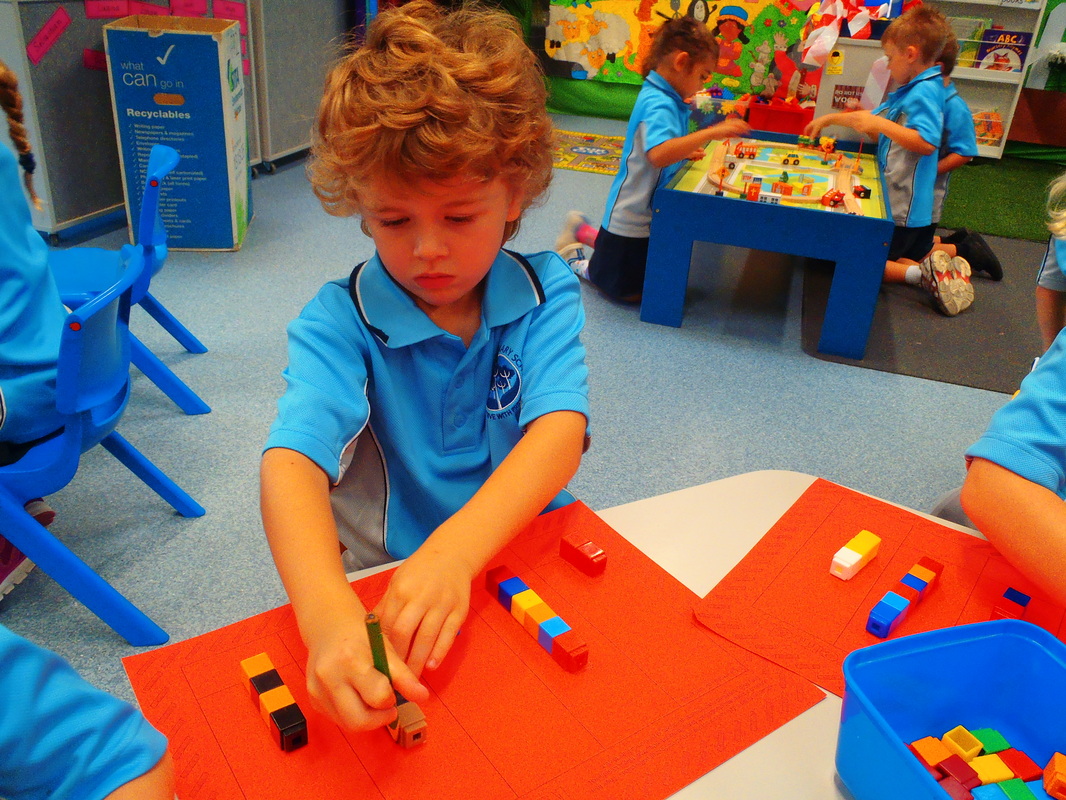
Making and comparing height towers using dice
|
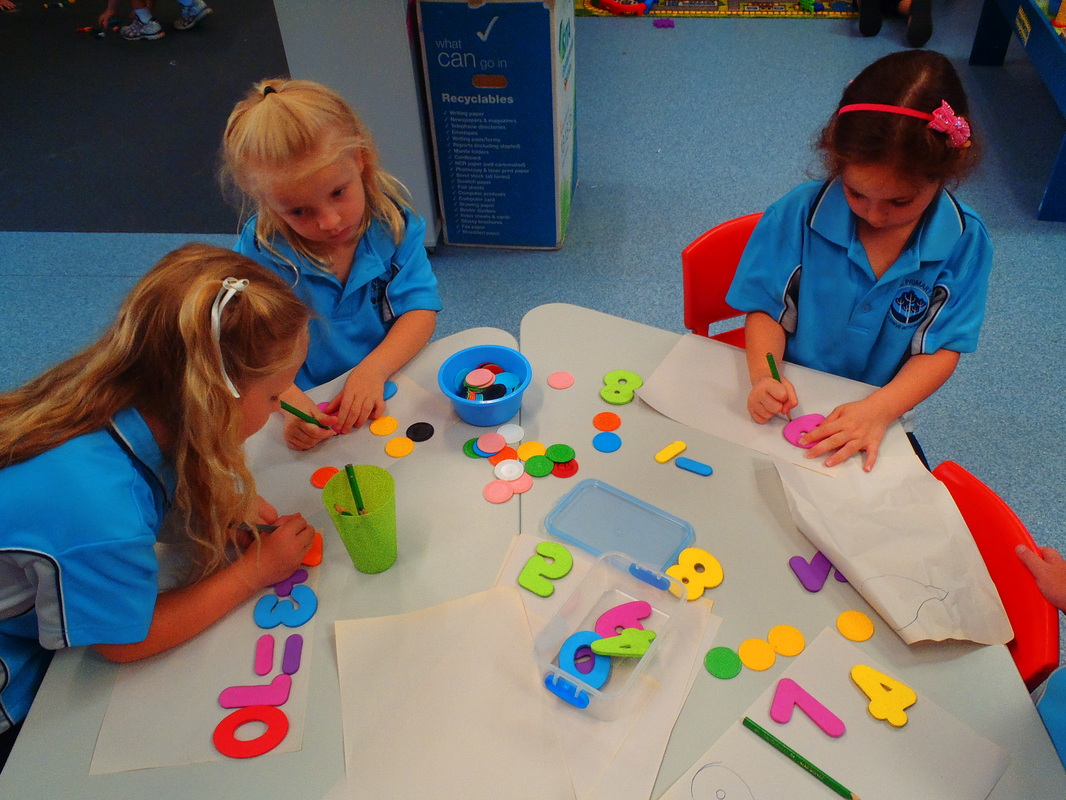
Creating addition sums
|
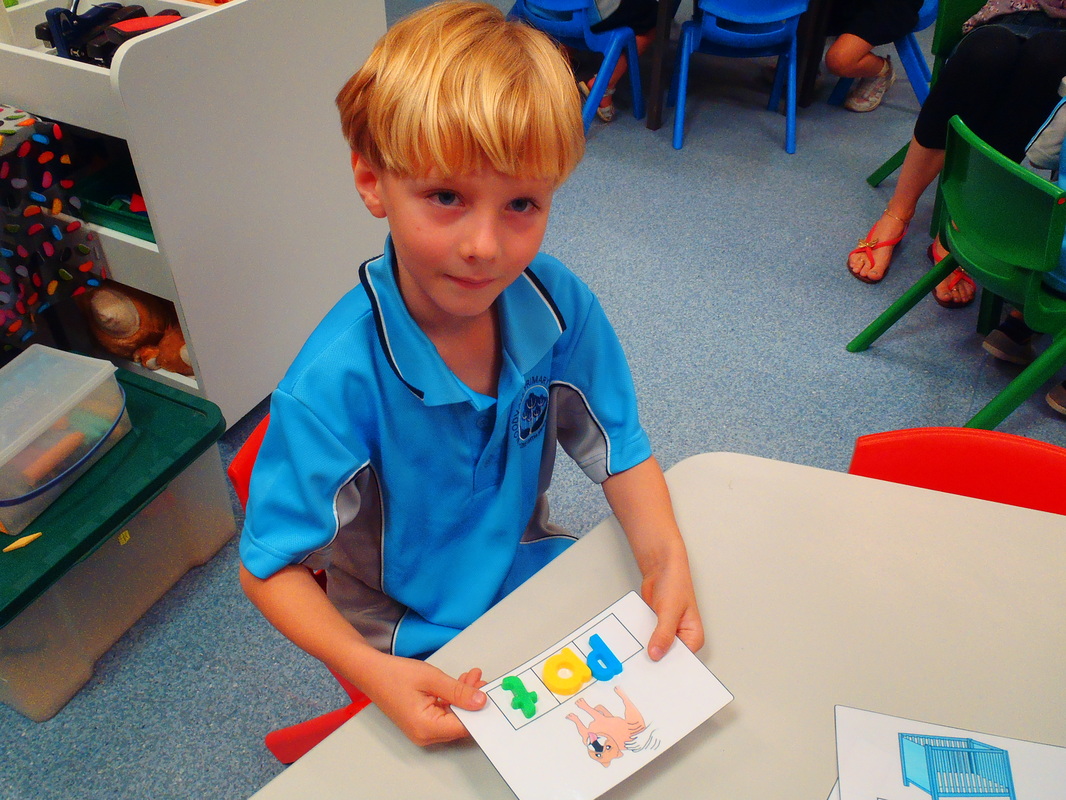
Creating consonant-vowel-consonant words using word frames.
|

Creating words using playdough cutters.
|
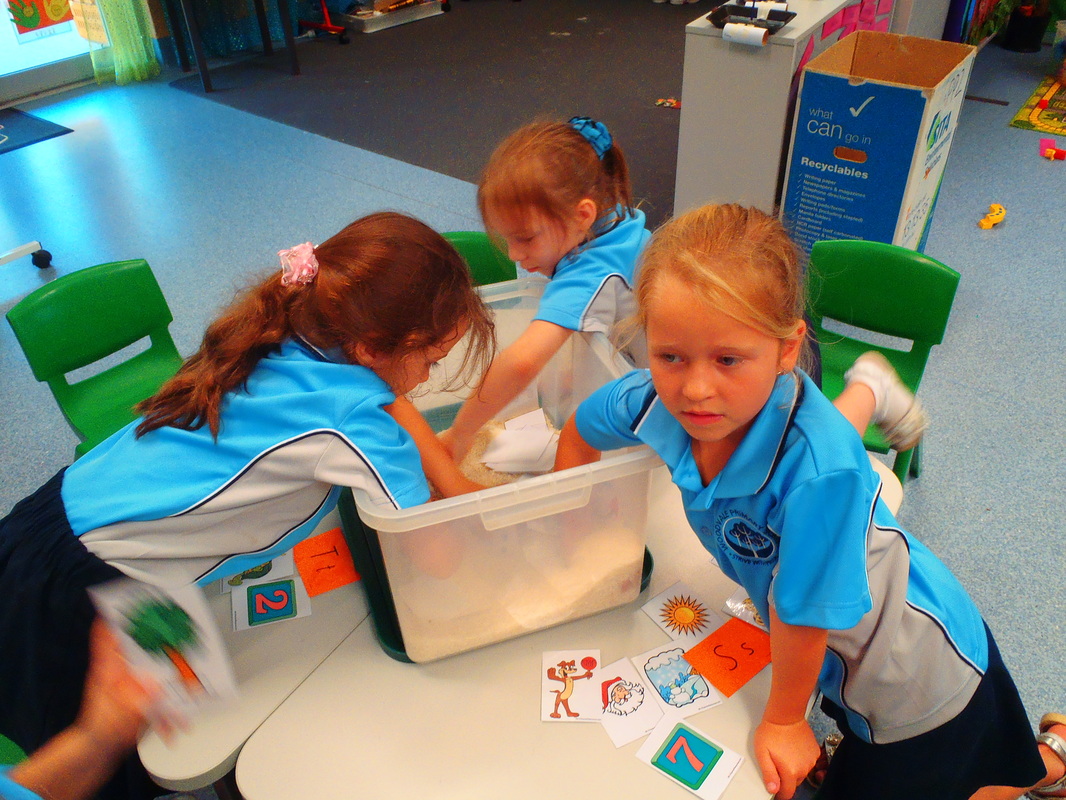
Sorting intial sound pictures
|
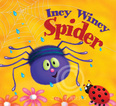 Last week we looked at the Nursery Rhyme Incy Wincy Spider. We made an Incy Wincy background using crayons and edicol dye. Our focus was on pencil grip and ensuring we coloured in the entire picture so when we used the edicol dye it only covered the areas we had not coloured. We then used left to right stokes of the edicol to assist us with reading and writing directionality. We then used small pieces of crepe paper which we scrunched up using our pincer grip to create Incy Wincy. We then labeled our picture. From the Nursery Rhyme we answered blank leveled questions and wrote a sentence about what our spider was doing.
We watched the "Magic School Bus Spins a Web" and learnt that spiders can make a web using spinnerets to catch their prey, some spiders build traps under the ground and some spiders hunt for their food. We then Wrote a spider fact and traced a web pattern to develop our fine motor skills.
We used the Braidy tool to assist us in creating a short narrative sequence about Incy Wincy Spider. Our focus was to connect our ideas, use full sentences and appropriate tense. You can assist your child at home by encouraging who, what, where, when, why and incorporate feelings into event retells and generating stories.
We have also been focusing on our listening and comprehension skills. When we listen we need to ensure we listen to the whole instruction, we clarify and misunderstandings and we complete each step asked of us. You can help your child at home by giving them simple 3 step instructions eg. Alex, can you go and get your school bag, shoes and hat please? To reinforce what you are asking ensure you have your child's attention. They are looking at you, get them to repeat the task if necessary, break instructions down into manageable steps. Use physical/visual prompts if required.
In our phonics programme we are focusing on recognising the visual letters and the sounds they make. We are then using this knowledge to decode simple consonant-vowel-consonant words. You can assist your child at home by revising the letters in the home tasks section of the BLOG, identifying letters within the environment, alphabet games, flash cards, identifying and decoding simple words in books etc.
As we continue to progress through our phonics programme a major focus is fine motor control in order to develop your child's pencil grip and letter formation. Activities such as tweezers, picking up small objects, pegs, spray bottles, playdough, painting, chalk, finger painting, threading etc will all assist in developing your child's fine motor control and strengthen the muscles in their hands. When your child is writing monitor how they hold their pencil, their posture, the pressure they apply to the page or surface, how tightly they are holding the object (pencil, paint brush etc) and the direction they form their letters. These aspects are much easier to correct at point of need rather than your child developing a habit which becomes much harder to correct.
We used playdough to create characters. We had to give them a name and a setting in which they lived. These are some of our characters:
|
Harry: My character is called Scoopy and he lives with his friend.
Sophie: My character is called Sparkles and she lives in Woodvale.
Jack: My character is called Jayden and he lives in a witches house.
Sebastian: My character is called Sebastian and he lives on the moon.
| Olivia: My character is called Whitey and he lives at home.
Erin: My character is called Maggie and she lives in the garden.
Sienna: My character is called Isabella and she lives in a cave.
Holly: My character is called Petty and hse lives in a jungle.
Leah:My character is called Leah and she lives in the jungle.
| In Numeracy we are looking at teen numbers. We revised the 1-9 number sequence and used this knowledge to assist us when ordering teen numbers. We then made a web using wool and followed the 11-20 number sequence. We are continuing to look at addition and have introduced the concept of subtraction or take away. Using counters we practiced Number stories from Incy Wincy Spider. At home you can assist your child by using language involving more/less, take away, addition, how many altogether, how many are left, and providing situations in which they can use simple addition and subtraction. Eg. Counting how many knives and forks they need, count the pegs when bringing in the washing, count how many tomatoes are left in the bag after we have used some to make sandwiches etc.
At home you can revise numbers 11-20 with your child and encourage your child to identify numbers within their environment. Eg. House numbers, shops, signs etc.
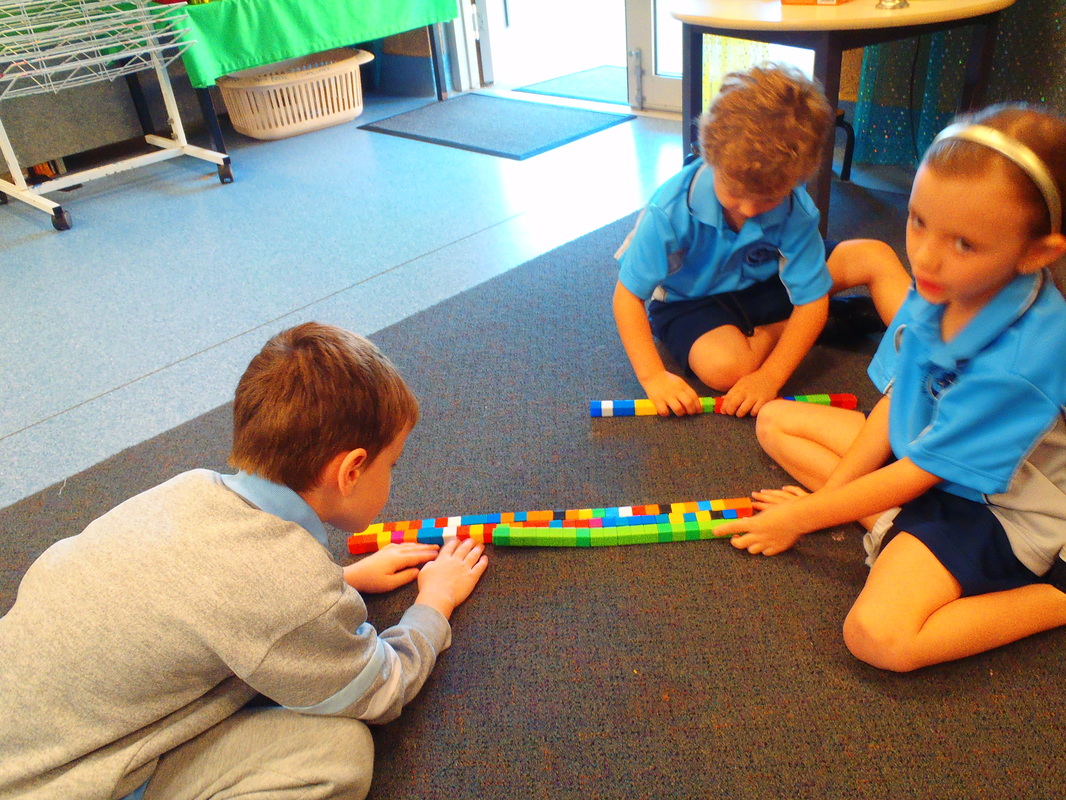
1 to 1 countnig and comparison of objects to compare more and less.
|
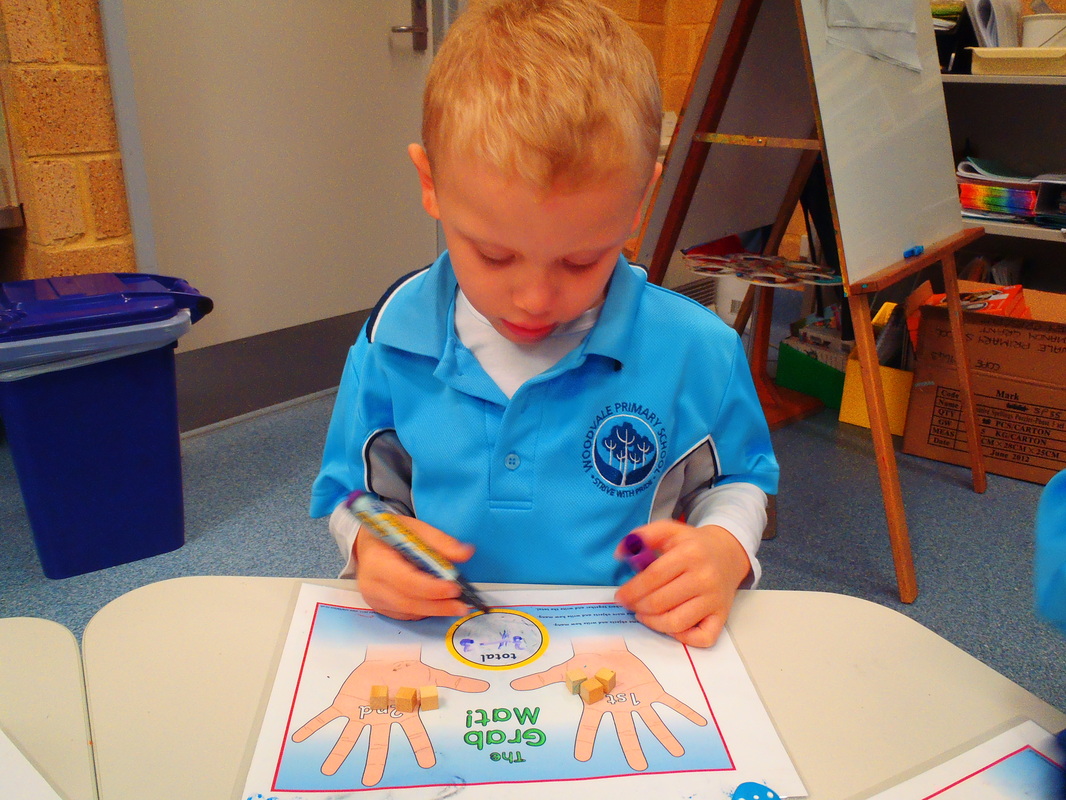
Adding using dice and blocks
|

Creating colour and shape patterns using fine motor threading.
|

Number formation using playdough
|

Identifying number sequence and formation.
|
 Click here to access song We hope you had a lovely Easter Break and got spoilt by the Easter Bunny. This week we looked at the Nursery Rhyme, "Once I Caught a Fish Alive". We used hand actions to count up to 10 and practice small finger movements. We then used different tones of voice to sing each verse. When then sequenced the numbers to 10 and revised counting objects 1 to 1 to make the groups of fish. We placed scales on a fish using numbers 11-20 and had to match the number as well as identify the numbers out of order. We continued to look at number stories and the concept of addition and subtraction. When using objects to count you can assist your child by ensuring they organise the equipment, count only one object at a time, recognise the operation they are performing eg. Addition (adding on) or subtracting (taking away). If your child does make an error ask them to check their answer or if their answer is far from the correct result ask them if it sounds correct. Eg. 4+2 do you think that really makes 30? No that’s too many, lets have another try. We used playdough to create numbers using a laminated number outline as well as sequenced numbers using missing number boards. We are incidentally looking at written numbers and played number bingo where the students had to read the written number and match it to the numeral on their board. To assist the students they had a sheet with the words and numbers which they could match and assist them in identifying the correct number.
We linked this concept of being able to write numbers as words and discovered that everything can be written as a word. Some words we can sound out and other words are tricky that we must remember called sight words. We then practiced writing and reading consonant-vowel-consonant words. You can assist your child by developing their auditory skills to hear the individual sounds in words. This skill is referred to as segmenting eg. Dog has d-o-g. This helps your child when sounding out a word for reading. To assist their writing they require a skill called blending where they can sound out the individual letter sounds and are required to blend them together to form a word. Eg. S-i-t makes sit. By practicing oral blending and segmenting at home this will assist your child when they are reading and writing.
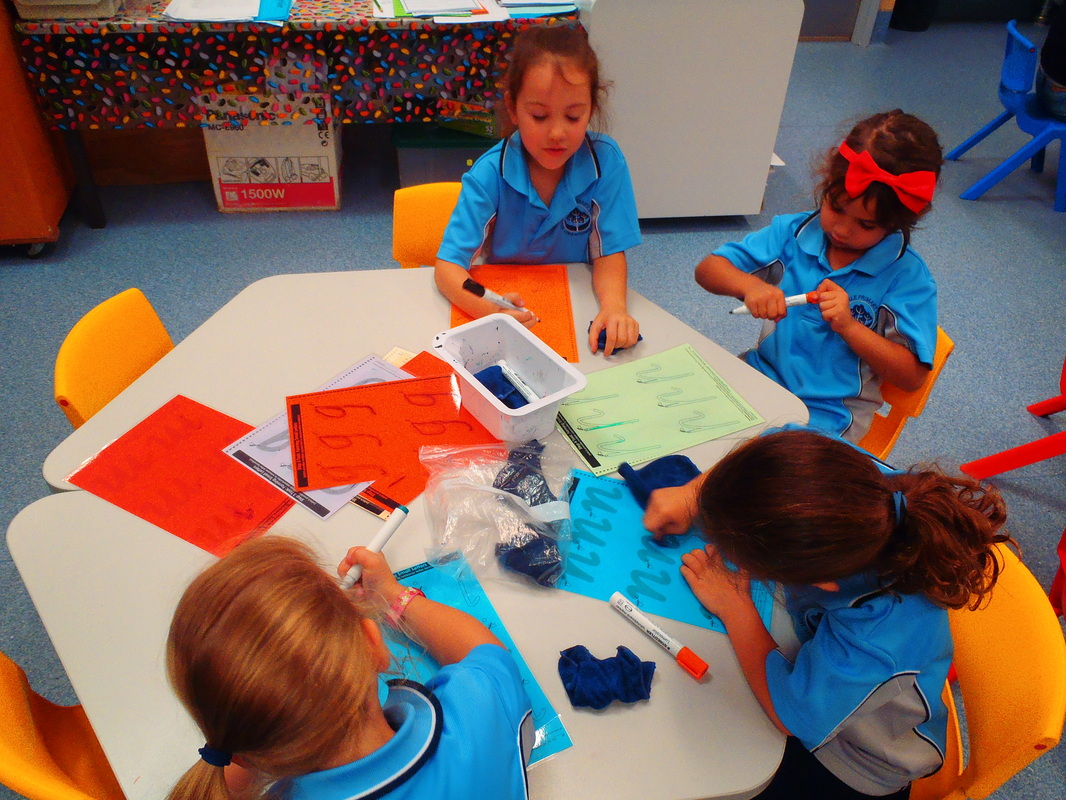
Tracing letters
|
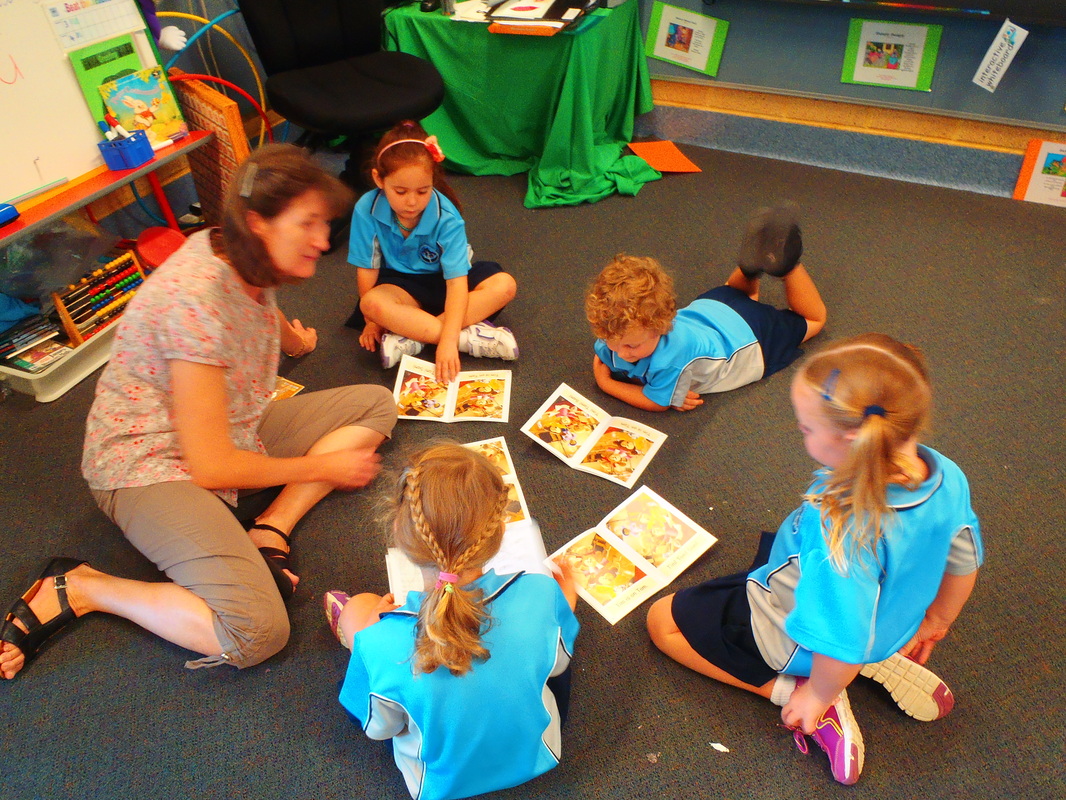
Practicing reading and text conventions.
|
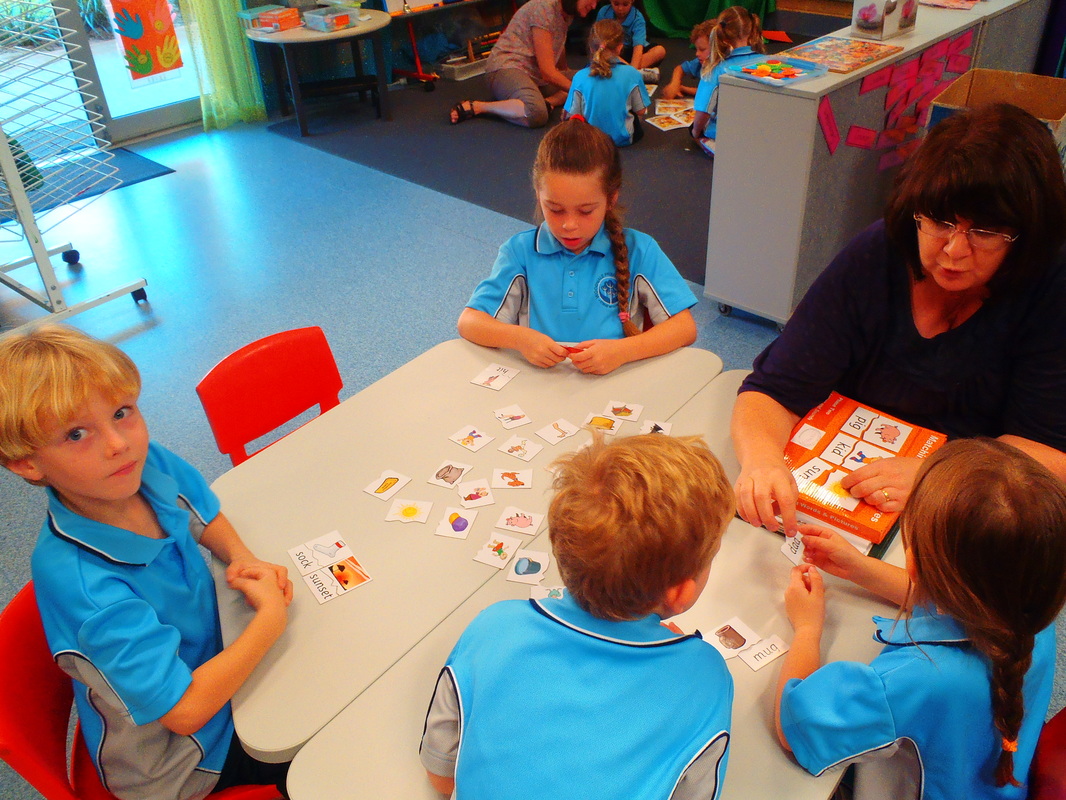
Reading and segmenting words to match to pictures.
|
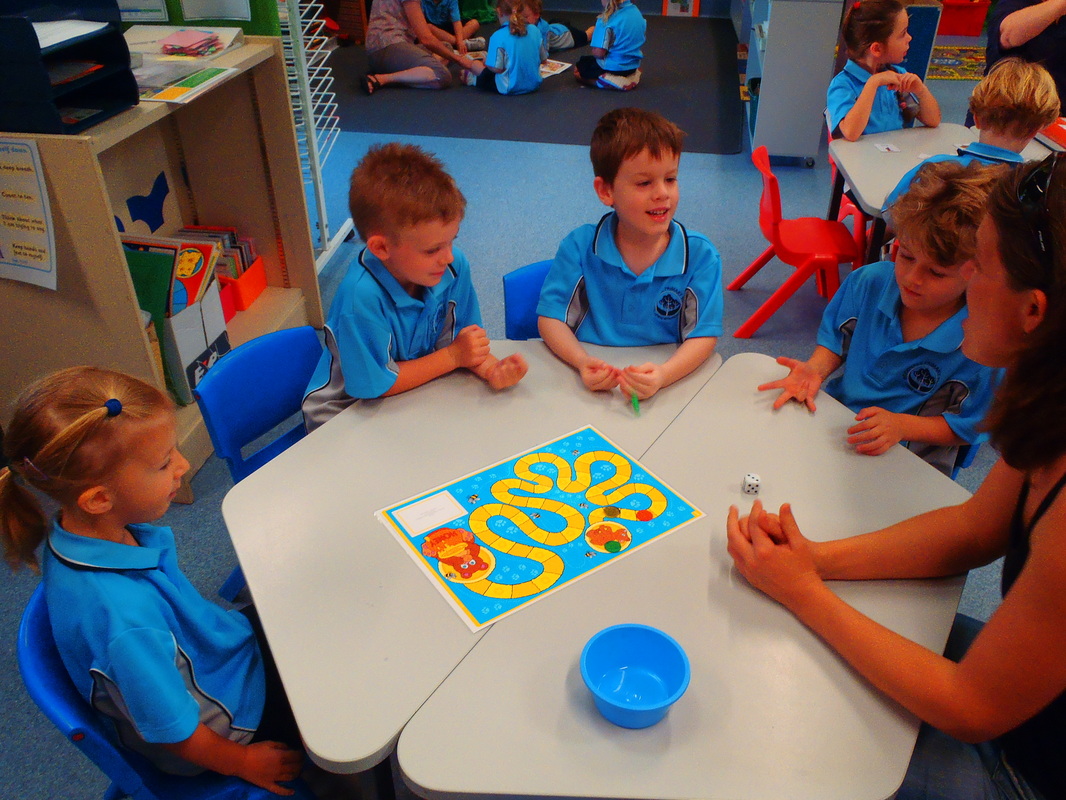
Identifying letters and creating words with initial sounds.
|
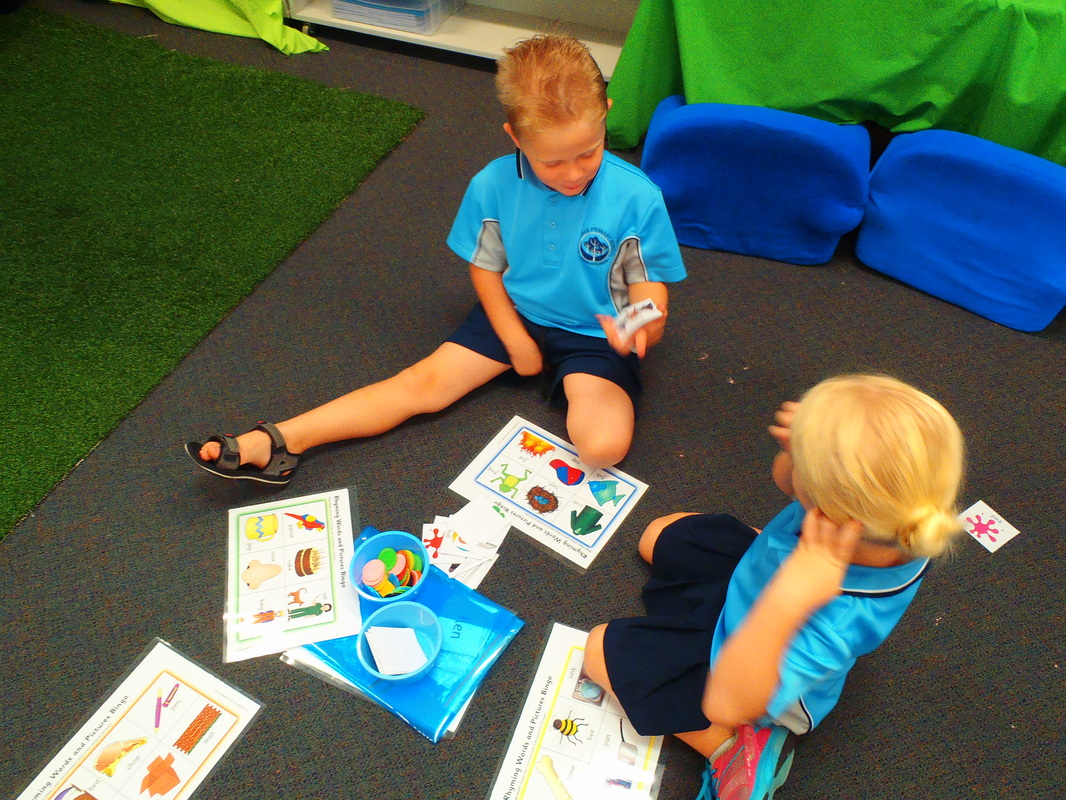
Identifying rhyming words
|
|








